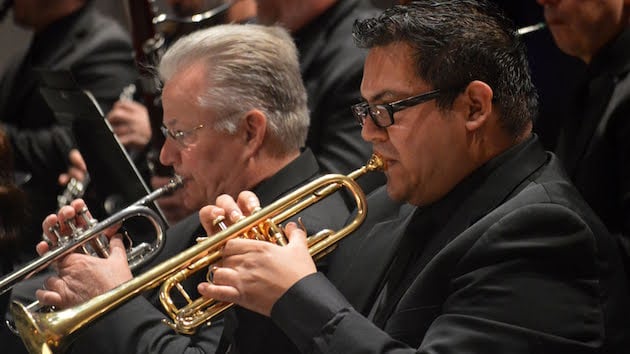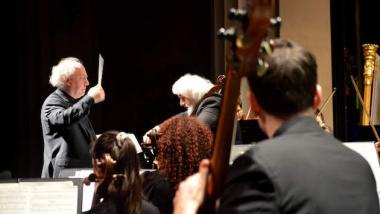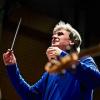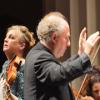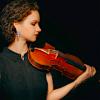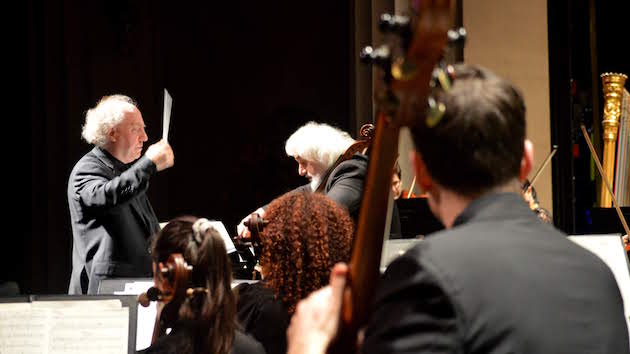
There was a distinctly Hollywood vibe to Sunday’s Los Angeles Chamber Orchestra concert showcasing the Concerto for Cello and Orchestra by top film and TV composer, James Newton Howard. And while technically the concerto had its premiere the night before (in Glendale), it was the Royce Hall concert at UCLA (on L.A.’s more fashionable Westside) that brought out the Hollywood music community in force. “Hans Zimmer is here,” Howard announced from the stage prior to the concert.
It’s easy to forget how deeply intertwined the movie/TV industry is with L.A.’s top classical musicians, including the members of LACO, many of whom have spent years together with Howard on studio soundstages recording scores to movies like The Hunger Games, The Dark Knight, and Fantastic Beasts and Where to Find Them.
Another element that upped the emotional ante was the return to the podium and the keyboard of LACO’s Conductor Laureate Jeffery Kahane. Following an exceedingly warm greeting, he led an imaginatively conceived program that began with Kahane as soloist/conductor in a champagne-bubble performance of Mozart’s Piano Concerto No. 14 in E-flat Major, K.449. The ebullience of Mozart gave way to the inwardly reflective, emotionally somber atmosphere of Howard’s work, which received a resonant performance by Andrew Shulman, LACO’s principal cellist.
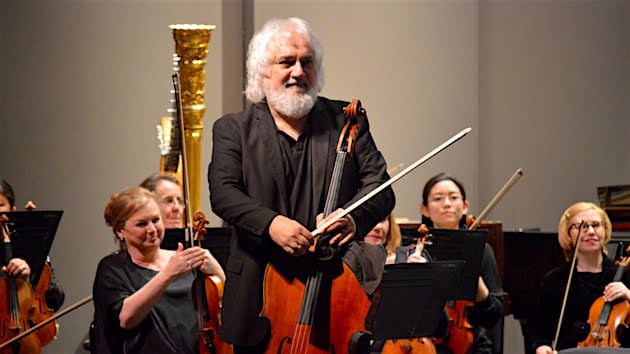
After intermission the pulse of the concert quickened with a performance of Gabriella Smith’s rambunctious Riprap for marimba and strings, featuring principal percussionist Wade Culbreath. Then bookending the evening in Mozartian fashion, the program concluded with the Symphony No. 36 in C major (“Linz”), K. 425, which the orchestra had not performed for 25 years.
James Newton Howard has classical credentials, though he admits he was a music-school dropout. His violin concerto was premiered by Carl St. Clair and the Pacific Symphony; his Sextet (for string quartet, flute, and clarinet) was commissioned and performed by the Seattle Chamber Music Festival. His resume is, however, remarkably varied, and includes a period in his rock-star youth playing synthesizer and supplying orchestral arrangements for Elton John.
In a preconcert conversation with concertmaster, Margaret Batjer, Howard revealed that he was never completely comfortable defining his “cello piece” as a “concerto.” He was right. Its single movement, while containing the requisite virtuosity and orchestral dialogue of a concerto, is more akin to an elegy—a poem of serious reflection.
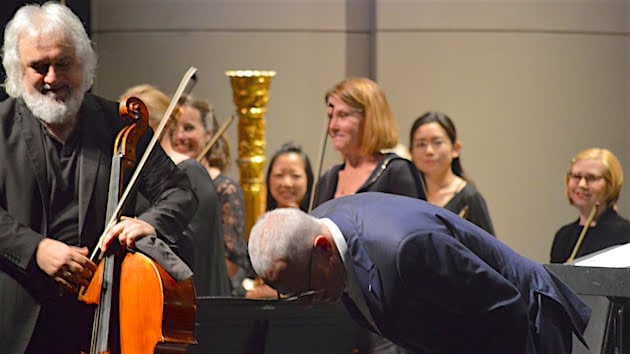
Before the cello makes its entrance, the strings — speaking in their lowest register — create an atmosphere reminiscent of an overcast dawn where the light is diffused and spectral. There is something decidedly Russian about the work, beginning with that winter dawn that calls to mind Lensky’s duel in Tchaikovsky’s Eugene Onegin. The cellos’ deep sonorities and expressive, though brief, melodic lines tend to turn inward like the Shostakovich string quartets.
Within its single movement, the work ebbs and flows between a pair of Adagio sections that surround a lengthy central Allegro. The harmonic framework of each section is emphasized by cadenzas of varying lengths. The interplay between the cello and orchestra is skillful and varied, with the cello providing cogent statements against the orchestral backdrop. There are also passages where the exchanges become more confrontational and competitive, including a military march accentuated by thumping, percussive foot falls reminiscent of the approaching armies in the Shostakovich Seventh Symphony, less the rampant patriotism.
The Flute, clarinet, bassoon, and trumpet offer glimmers of hope but cannot dispel the overall sense of brooding meditation, superbly elicited by Shulman. As Howard explained, we live in troubled times and the work reflects it in the coda’s fade to gray.
The quick tempo, and color-filled orchestral interplay of Gabriella Smith’s Riprap was an ideal choice to follow Howard’s concerto. It’s certainly a concerto of a very different temperament. Using every part of his grand-piano-sized marimba, Wade Culbreath produced traditional pulses, à la Steve Reich, to glissandos produced by running the stick end of the mallets across the instrument’s descending tubes, to striking its wooded frame with brushes in rhythmic glissandos and diminuendos. Smith enjoys composing pieces that paint pictures in the mind. For Riprap, think Jackson Pollack.
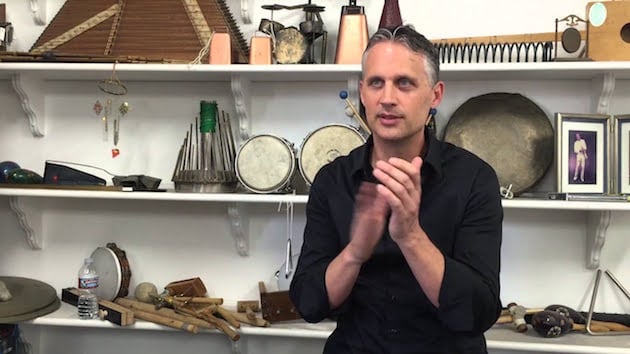
Mozart is ingrained in LACO’s DNA, dating back to its founding as spiritual cousin of the Academy of St. Martin in the Fields whose music director, Neville Marriner, was also LACO’s first director. It is a tradition that has been maintained, nurtured, and amplified by Kahane.
The ease and rapport that he demonstrated in his conducting of the concerto from the keyboard and the symphony from the podium gave the appearance of being almost effortless— a brilliant illusion born of years of collaboration with these musicians.
